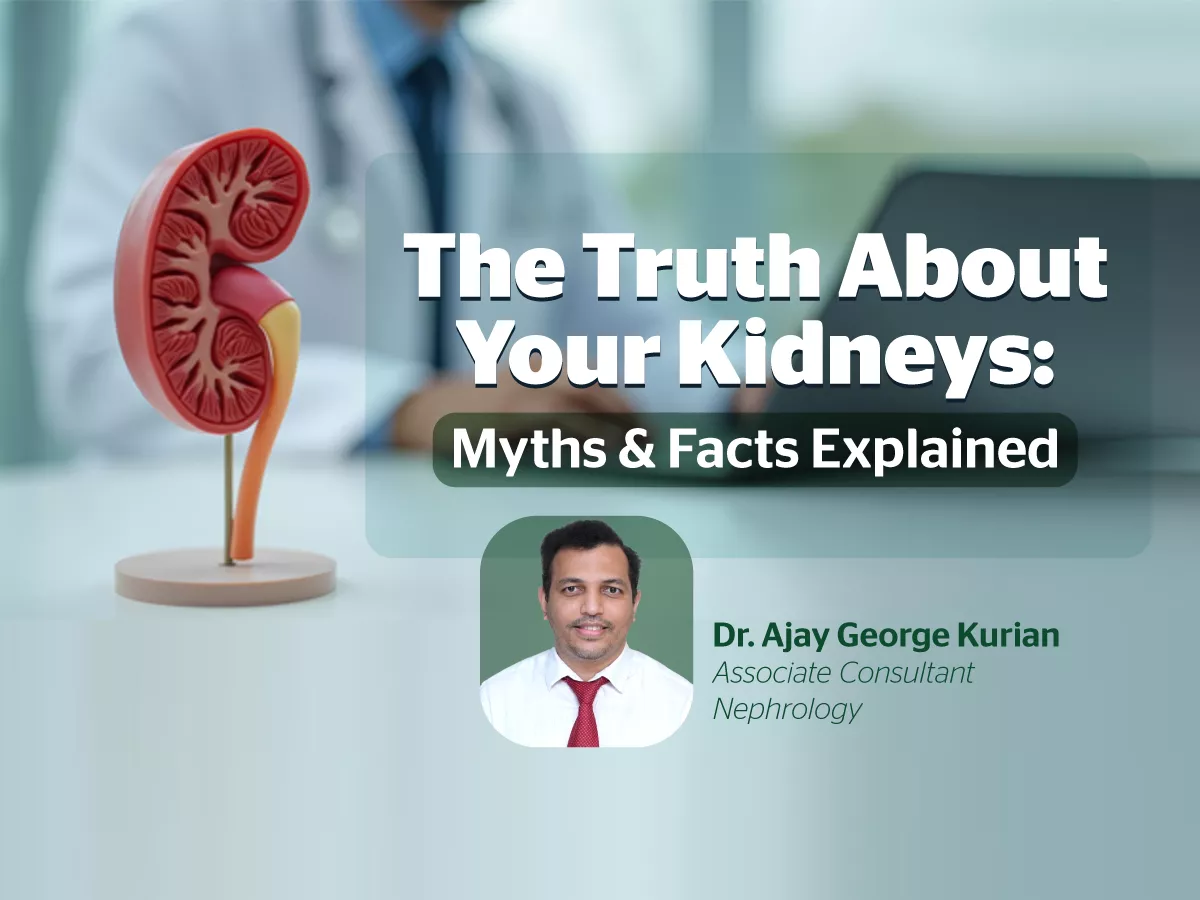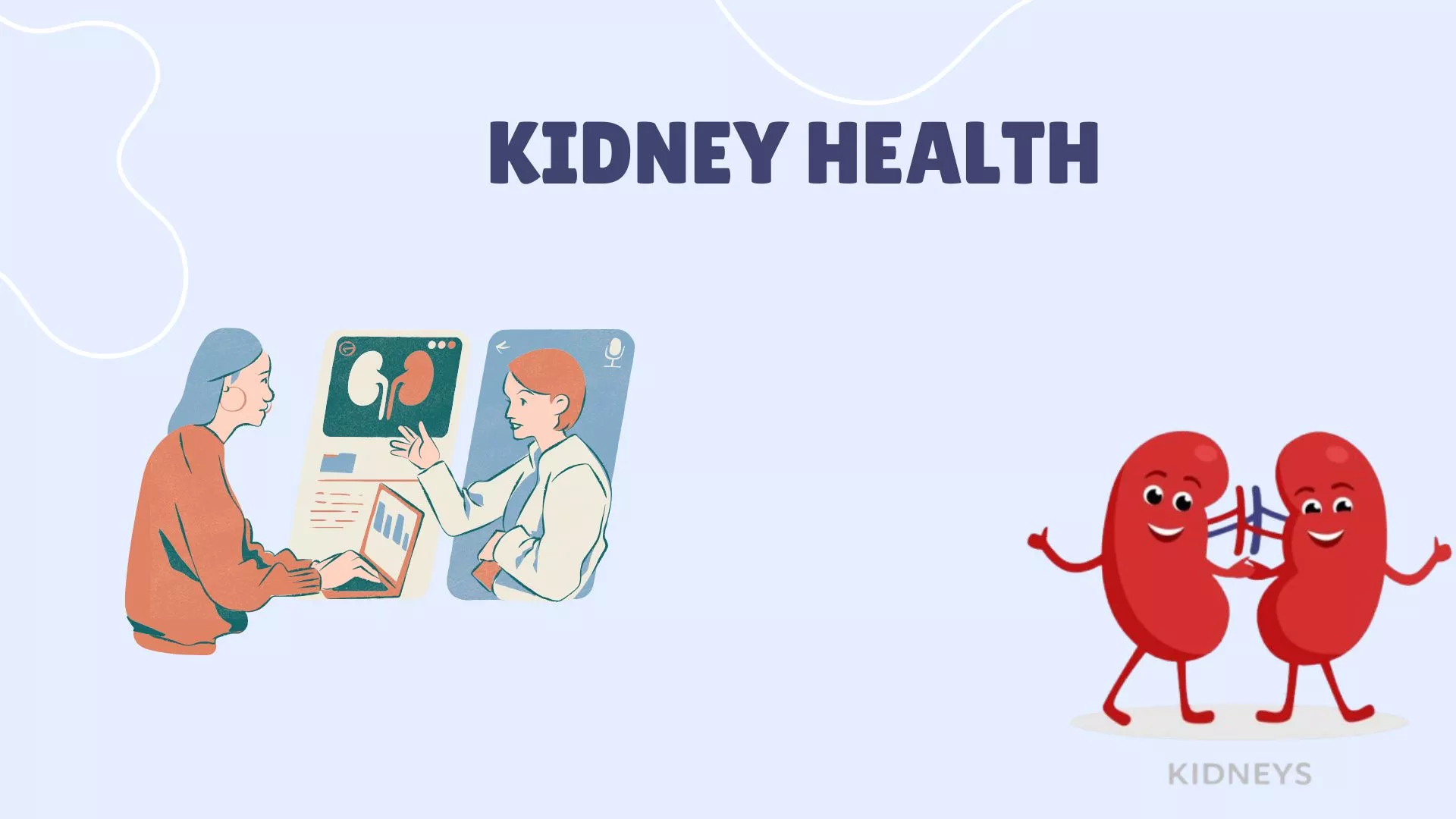What is creatinine ?
Creatinine is a waste product that comes from the normal breakdown of muscles in your body. Your kidneys filter it out of your blood and remove it through urine.
Doctors measure creatinine levels in the blood to check how well your kidneys are working. If the level is high, it can mean the kidneys aren’t filtering properly.
If you’re experiencing persistent issues related to kidney function, consulting experienced nephrologists in Kochi Kerala can help identify the cause and guide you with the right treatment options.
Can I have medicine to reduce creatinine
There isn’t a specific medicine that directly lowers creatinine, but treatment focuses on addressing the cause. Here are some ways to reduce high creatinine levels:
- Treat the underlying cause – If creatinine is high due to kidney disease, infections, or dehydration, treating these conditions can help.
- Control blood pressure & diabetes – Medications like ACE inhibitors (e.g., enalapril) or ARBs (e.g., losartan) help protect kidney function.
- Avoid kidney-harming drugs – NSAIDs (e.g., ibuprofen,diclofenac, mefenamic acid ) and some antibiotics can worsen kidney function.
- Stay hydrated – Dehydration can increase creatinine levels.
- Modify diet – Reducing protein intake (especially red meat) and avoiding excess salt can help.
For advanced care or if lifestyle changes aren’t helping, visiting a trusted nephrology hospital in Kochi Kerala can ensure proper evaluation and management by specialists.
Is my both kidneys affected in a kidney disease
It depends on the type of kidney disease. Some conditions affect both kidneys, while others can affect only one.
Diseases that usually affect both kidneys:
- Chronic Kidney Disease (CKD) – Conditions like diabetes, high blood pressure, and glomerulonephritis often damage both kidneys over time.
- Acute Kidney Injury (AKI) – Severe infections, dehydration, or certain medications can temporarily affect both kidneys.
- Polycystic Kidney Disease (PKD) – A genetic condition where cysts grow in both kidneys.
- Nephrotic Syndrome/Glomerulonephritis – Autoimmune or inflammatory diseases often affect both kidneys.
Diseases that may affect only one kidney:
- Kidney stones – If a stone blocks one kidney, the other usually functions normally.
- Kidney infections (Pyelonephritis) – Can occur in one kidney but sometimes affect both.
- Tumors or cysts – A tumor or cyst can develop in one kidney without affecting the other.
- Renal artery stenosis – If a blockage happens in the artery supplying one kidney, only that kidney is affected.
If your creatinine is high, it usually means both kidneys are involved because one healthy kidney can still maintain normal function. A kidney function test (like eGFR, creatinine, or ultrasound) can help determine if one or both kidneys are affected
Does my diabetic or hypertension medicines damage my kidney
Most diabetes and blood pressure medications are actually protective for your kidneys. Some may need dose adjustments if kidney function declines, but they don't cause kidney damage when monitored properly. In fact, certain medications, like ACE inhibitors, ARBs, and SGLT2 inhibitors, are specifically used to slow kidney disease progression.
Does my kidney disease leads to high blood pressure or my high blood pressure leads to kidney damage
It's a two-way relationship. High blood pressure (hypertension) is one of the leading causes of kidney disease because it puts extra strain on the tiny blood vessels in the kidneys. Over time, this can damage the kidneys, reducing their ability to filter waste and control fluid balance. As kidney function declines, excess fluid and toxins build up in the body, which raises blood pressure even more.
On the other hand, if you already have kidney disease, your kidneys may struggle to regulate blood pressure properly. This happens because they play a key role in balancing fluids, salt, and hormones that control blood pressure. As kidney function worsens, blood pressure tends to rise, creating a cycle that can further damage the kidneys.
That’s why managing blood pressure is crucial—it helps protect your kidneys, and in turn, healthy kidneys help keep your blood pressure stable. Medications, diet, and lifestyle changes can all help break this cycle and slow kidney disease progression.
What are the diet advised for kidney patients
Dietary recommendations for kidney patients depend on the stage of kidney disease, presence of comorbidities, and whether the patient is on dialysis. Here’s a general guideline:
1. Chronic Kidney Disease (CKD) - Non-Dialysis
- Protein: Moderate intake (0.6-0.8 g/kg/day) to reduce kidney workload.
- Sodium: Restrict to <2g/day to control blood pressure and fluid retention.
- Potassium: Limit high-potassium foods if levels are elevated (e.g., bananas, oranges, potatoes, tomatoes, coconut water , lime juice ).
- Phosphorus: Reduce processed foods, dairy, nuts, and colas to protect bones.
- Fluids: Adjust intake based on urine output and swelling.
2. Dialysis Patients (Hemodialysis/Peritoneal Dialysis)
- Protein: Increased intake (1.2-1.4 g/kg/day) to prevent muscle loss.
- Sodium: Still restricted to control fluid retention.
- Potassium: Limit high-potassium foods if levels are elevated (e.g., bananas, oranges, potatoes, tomatoes, coconut water , lime juice ).
- Phosphorus: Reduce processed foods, dairy, nuts, and colas to protect bones.
- Fluids: Adjust intake based on urine output and swelling
3. Nephrotic Syndrome
- Protein: Moderate intake (0.8-1 g/kg/day).
- Sodium: Strict restriction to manage edema.
- Fats: Low saturated fats to reduce cardiovascular risks.
4. Kidney Stones
- Oxalate Stones: Reduce oxalate-rich foods (e.g., spinach, nuts, tea).
- Calcium Stones: Adequate dietary calcium (not supplements).
- Uric Acid Stones: Low purine diet (avoid red meat, shellfish).
Which is dangerous frothing of urine or bubbles in urine
Frothing of urine refers to the presence of persistent foam in the urine, which appears as a stable, thick layer of bubbles that do not disappear quickly after urination. It is often caused by the presence of protein (proteinuria) in the urine and can be a sign of kidney disease.
Key Characteristics of Frothy Urine:
- Persistent and thick foam (does not disappear quickly)
- Looks like beer foam or soap suds
- May increase over time if kidney disease worsens
Causes of Frothy Urine:
- Proteinuria (Protein in Urine) – Most Concerning
- Nephrotic syndrome (massive protein loss)
- Chronic kidney disease (CKD)
- Diabetic nephropathy
- Hypertension-related kidney damage
- Glomerulonephritis
- Dehydration – Highly concentrated urine can create temporary froth.
- Rapid Urination – Forceful urine flow can cause bubbles, but these disappear quickly.
- Soap or Toilet Cleaning Agents – May falsely appear as froth.
How is Frothy Urine Different from Bubbles?
- Frothy urine = Persistent, stable foam (possible proteinuria).
- Bubbles in urine = Temporary, disappear quickly, usually harmless.
When to Be Concerned?
If foamy urine is persistent, worsening, or accompanied by:
- Swelling in the face, hands, or legs
- Fatigue, weakness
- High blood pressure
- Frequent urination at night
A urinalysis (dipstick test, protein/creatinine ratio) and kidney function tests (serum creatinine, eGFR) can help determine if proteinuria is present.
Is CT scan or Ultrasound scan be an alternative for renal biopsy
CT scan and ultrasound are valuable imaging tools for evaluating kidney disease, but they cannot fully replace renal biopsy in many cases. Each modality has its strengths and limitations depending on the suspected kidney pathology.
Comparison of CT, Ultrasound, and Renal Biopsy
Modality
Advantages
Limitations
Ultrasound (USG)
- Non-invasive, no radiation.
- Can assess kidney size, shape, and echogenicity (suggesting chronic disease).
- Can detect cysts, hydronephrosis, or masses.
- Cannot differentiate between types of glomerular or tubulointerstitial diseases.
- Limited in detecting early parenchymal changes.
CT Scan
- Better than ultrasound for detecting masses, stones, infections (e.g., pyelonephritis, abscesses).
- CT angiography can assess renal artery stenosis.
- Uses radiation.
- Contrast-induced nephropathy risk (if contrast is used).
- Cannot provide histological details of kidney disease.
Renal Biopsy
- Provides histopathological diagnosis.
- Essential for diagnosing glomerular diseases, vasculitis, and some tubulointerstitial diseases.
- Can guide treatment in conditions like lupus nephritis or nephrotic syndrome.
- Invasive with risks (bleeding, infection).
- Not always required (e.g., in advanced CKD where it may not change management).
When Imaging Can Be Used Instead of Biopsy
In some conditions, CT or ultrasound may be sufficient, and biopsy may not be necessary:
- Polycystic Kidney Disease (PKD) – Diagnosed based on ultrasound criteria.
- Obstructive Uropathy – Ultrasound or CT can show hydronephrosis.
- Kidney Stones – CT (non-contrast) is the gold standard.
- Renal Tumors – CT/MRI can help characterize tumors, and biopsy is usually avoided unless needed for treatment planning.
- Renal Artery Stenosis – CT angiography or Doppler ultrasound can be diagnostic.
When Renal Biopsy is Needed
Glomerular diseases – Nephrotic/nephritic syndromes, lupus nephritis, IgA nephropathy.
Rapidly progressive kidney disease – Suspected vasculitis, RPGN.
Unexplained acute kidney injury (AKI) – Especially if not due to obstruction, infection, or known causes.
Proteinuria with unclear cause – To determine the type of glomerular injury.
CT or ultrasound can help in many kidney conditions, but they cannot replace biopsy
What are the symptoms of a kidney disease
Answer- Kidney disease can present with a wide range of symptoms, depending on the cause, severity, and whether it is acute (AKI) or chronic (CKD). Many kidney diseases remain asymptomatic in early stages, making routine screening important for high-risk individuals (e.g., diabetics, hypertensives).
Common Symptoms of Kidney Disease
1. General Symptoms
- Fatigue & Weakness → Due to anemia (low erythropoietin production) or toxin buildup.
- Loss of Appetite & Weight Loss → Due to uremia.
- Nausea & Vomiting → Seen in advanced CKD (uremia).
- Metallic Taste in Mouth → Uremic toxins cause taste changes.
- Difficulty Concentrating (Brain Fog) → Uremia affects brain function.
2. Urinary Symptoms
- Changes in Urine Output
- Decreased urine (Oliguria/Anuria) → Seen in AKI and advanced CKD.
- Increased urine (Polyuria, Nocturia) → Seen in early CKD, diabetic nephropathy, nephrogenic diabetes insipidus.
- Foamy Urine → Proteinuria (nephrotic syndrome, CKD).
- Blood in Urine (Hematuria)
- Gross hematuria → Suggests glomerulonephritis, kidney stones, or malignancy.
- Microscopic hematuria → Common in IgA nephropathy, thin basement membrane disease.
- Cloudy or Dark Urine → Possible infection or hemoglobinuria.
3. Swelling (Edema)
- Puffy Face & Eyelids (Morning Edema) → Seen in nephrotic syndrome.
- Leg & Foot Swelling (Peripheral Edema) → Due to fluid retention from CKD or nephrotic syndrome.
- Pulmonary Edema (Shortness of Breath) → Seen in severe CKD or acute fluid overload.
4. High Blood Pressure (Hypertension)
- Common in CKD due to fluid retention and increased renin-angiotensin activity.
5. Bone & Muscle Symptoms
- Bone Pain & Fractures → CKD-Mineral and Bone Disorder (CKD-MBD) due to high PTH and low vitamin D.
- Muscle Cramps & Weakness → Due to electrolyte imbalances (low calcium, high phosphate, high potassium).
6. Skin & Neurological Symptoms
- Itchy Skin (Pruritus) → Due to uremia and high phosphate levels.
- Darkening of Skin → Seen in advanced CKD due to toxin buildup.
- Numbness/Tingling (Peripheral Neuropathy) → Due to uremic toxins.
Symptoms Based on Stage of Kidney Disease
Stage
Symptoms
Early CKD (Stage 1-2)
Asymptomatic, mild proteinuria, high BP.
Moderate CKD (Stage 3-4)
Fatigue, nocturia, swelling, high BP, bone pain.
End-Stage CKD (Stage 5, ESRD)
Uremia, severe swelling, breathlessness, confusion, nausea, severe itching.
Acute Kidney Injury (AKI)
Sudden oliguria/anuria, fluid overload, hyperkalemia, confusion.
Kidney disease can be silent in early stages! If someone is at risk (diabetes, hypertension, family history), regular screening with serum creatinine, eGFR, and urinalysis is crucial.






